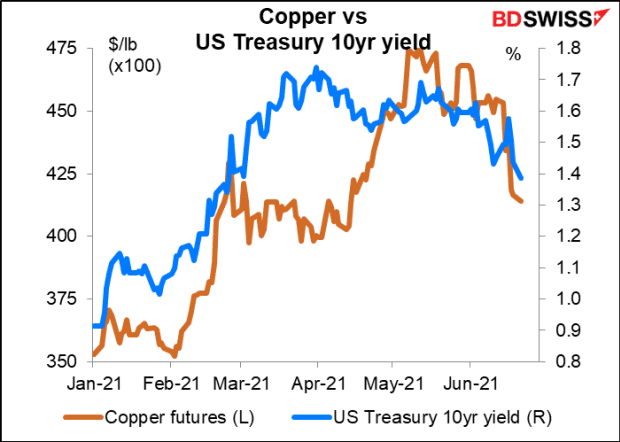It looks a lot like 2004 in the markets, Morgan Stanley says. What happens next.
U.S. stock futures pointed to a rebound on Monday following Wall Street’s worst week since October.
Stocks fell sharply on Friday, after St. Louis Federal Reserve President James Bullard said he expects interest rates to be raised in late 2022, earlier than the Fed’s forecast. Futures initially fell late on Sunday before a turnaround, with investors seemingly still digesting the Fed’s signal last week.
In our call of the day, Morgan Stanley MS,
After the U.S. recession ended in 2001, a “deep malaise” set in until 2003, when unemployment peaked and markets finally troughed, the bank’s chief cross-asset strategist Andrew Sheets said in a note on Sunday.
He noted that the rally of 2003 was “classic early-cycle stuff,” with strong performance in small-caps, cyclicals, commodities, inflation breakevens and low-rated credit. “That rally meant that markets entered 2004 with a lot more in the price,” he said.
There are similarities between valuations back then and those today, he said, also acknowledging how abnormal the current times are. The forward price-to-earnings (P/E) ratio of global equities was 17x compared to 20x today, the U.S. 10-year break-even rate was 2.30%, against 2.26% today, while the VIX VIX,
Growth and inflation both moved higher in 2004 and the “market tone changed” as the economy recovered, Sheets said. Energy, utilities, industrials and staples were the best performing sectors globally, while communication services, healthcare, materials and technology were the worst.
“In short, 2004 represents a more mid-cycle market after a strong, early-cycle rally. It saw similar valuations.” Sheets said. “And what happened next is similar to some key Morgan Stanley forecasts — a pause in equities within an ongoing bull market, lower default rates but slightly wider spreads, modest USD strength and more mixed equity leadership.”
While historical comparisons are never perfect, investors can look to 2004 for clues on how to outperform today’s market, he said. Non U.S. stocks outperformed 17 years ago and rewarded those with a more balanced cyclical/defensive exposure, loan outperformed bonds, and selling equity volatility was preferable to taking other risk premium, he said, noting that those were strategies Morgan Stanley currently likes.
There are differences, though, for example the Federal Reserve was hiking interest rates in 2004, while the central bank has only just signaled that rate increases will come in 2023. 2004 was also an election year and central bank policy and liquidity was different, so it is a less useful comparison for global rates. However, Sheets said early 2004 marked a midway point between the end of easing — a 25 basis point cut in June 2003 — and the start of tightening, a 25bp hike in June 2004, offering more in common with today.
Finally, Sheets highlighted just how quickly things can change, noting that on Jan. 1, 2004 the Fed was emphasizing patience, but by June it was “embarking on hikes that would raise the target by 425bp over the next two years.”
The chart
Copper futures HG00,

Chart via BDSwiss
The markets
U.S. stock futures YM00,
In Japan, the Nikkei 225 index NIK,
The buzz
French media conglomerate Vivendi VIV,
Italian-American vehicle maker CNH Industrial CNHI,
Shares in U.K. supermarket chain Morrisons MRW,
Sweden’s government collapsed on Monday, after Prime Minister Stefan Löfven lost a no-confidence vote.
Random reads
Mother gives birth at home during blackout with only a phone torch for light.
Spanish golfer Jon Rahm recovers from COVID-19 to win U.S. Open.
Need to Know starts early and is updated until the opening bell, but sign up here to get it delivered once to your email box. The emailed version will be sent out at about 7:30 a.m. Eastern.
Want more for the day ahead? Sign up for The Barron’s Daily, a morning briefing for investors, including exclusive commentary from Barron’s and MarketWatch writers.




